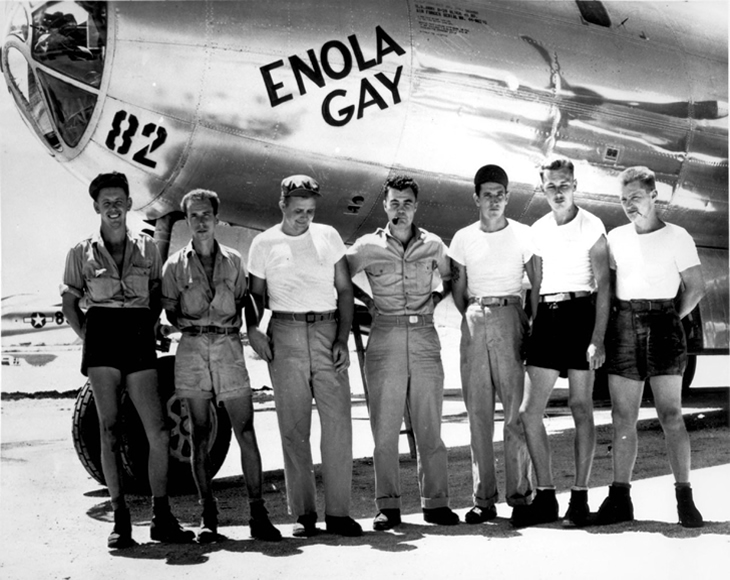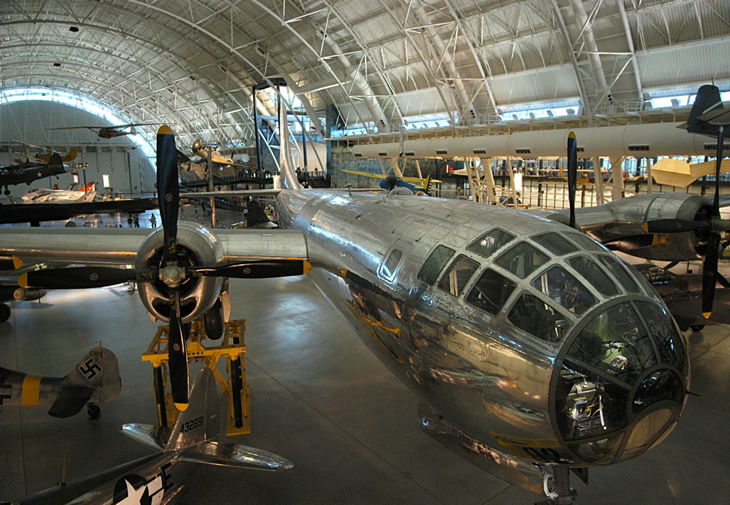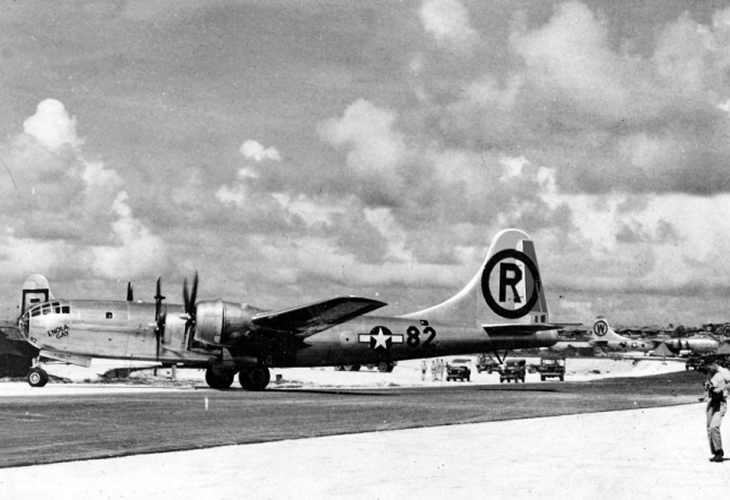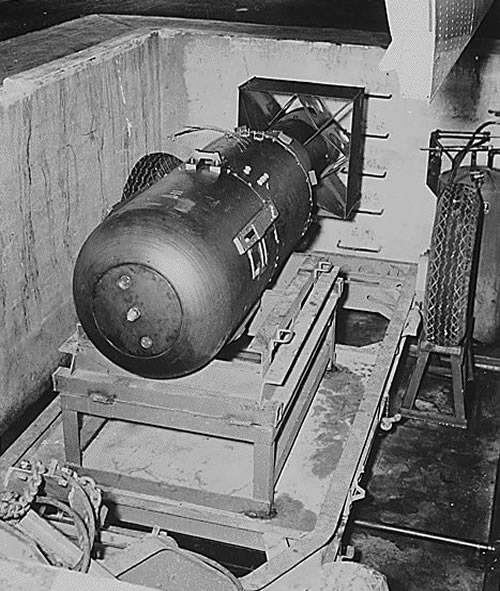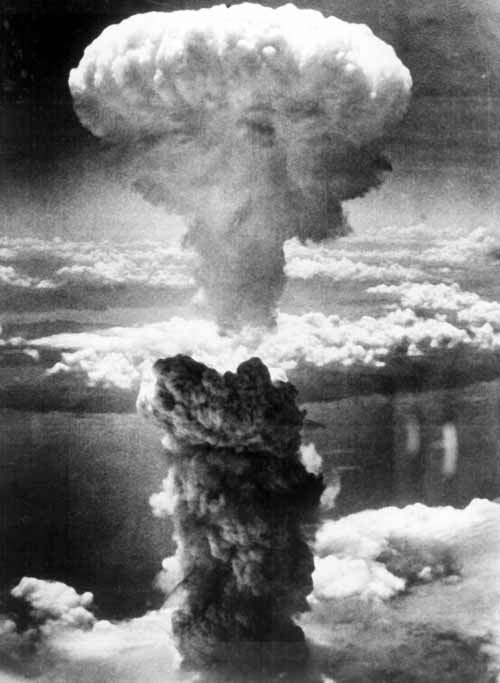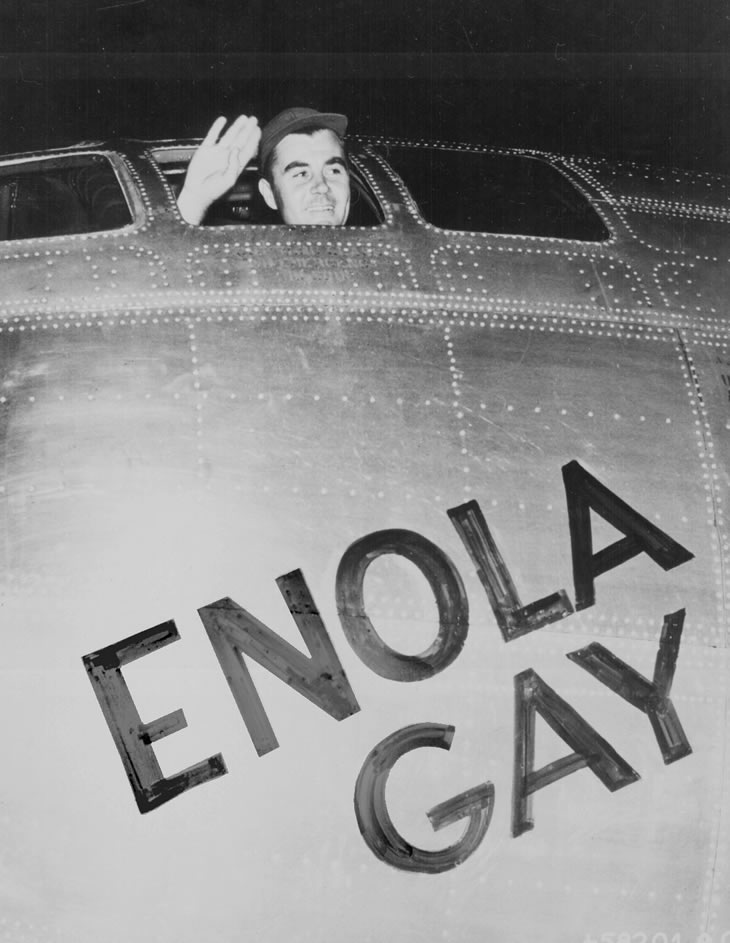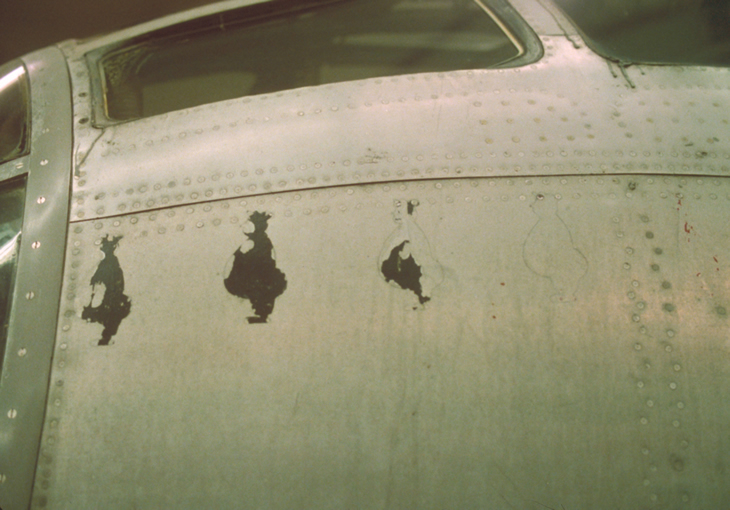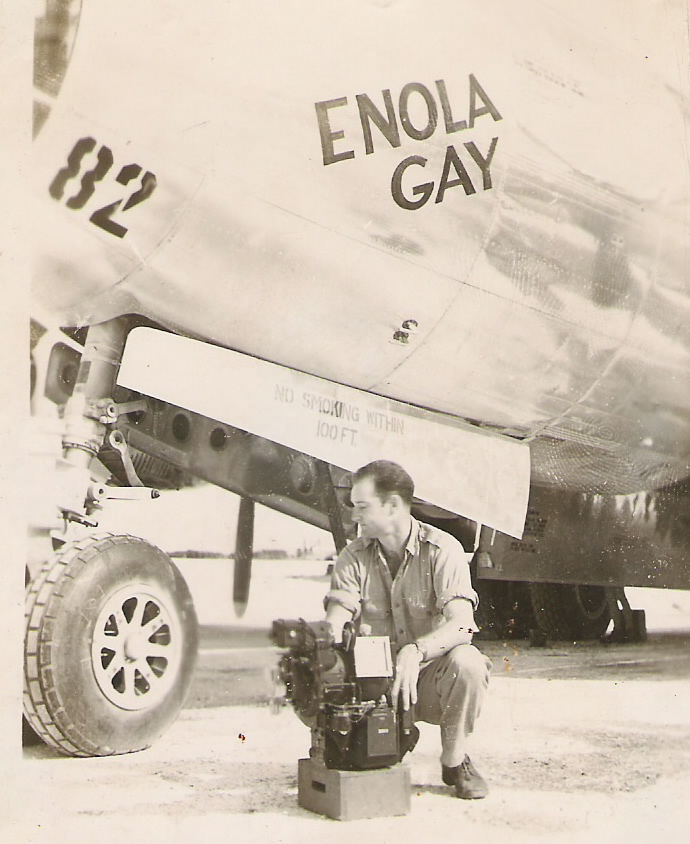BOEING B-29 ENOLA GAY SUPERFORTRESS BOMBER
AIRCRAFT HISTORY, FACTS AND PICTURES
(THE AIRCRAFT THAT DROPPED THE FIRST NUKE ON JAPAN)
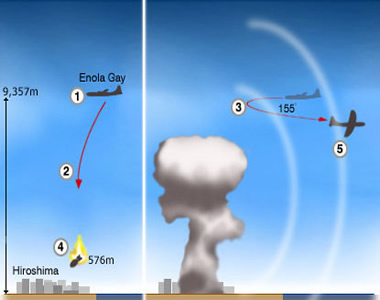 |
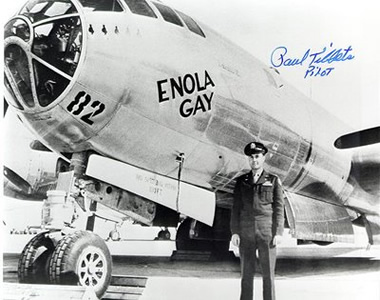 |
The Enola Gay is the B-29 Superfortress bomber that dropped the first atomic bomb, code-named "Little Boy", to be used in war, by the United States Army Air Forces (USAAF) in the attack on Hiroshima, Japan on 6 August 1945, just before the end of World War II.Because of the bomber's role in the atomic bombings of Japan, its name has been synonymous with the controversy over the bombings themselves. The B-29 was named after Enola Gay Tibbets, the mother of the pilot, Paul Tibbets.
The Enola Gay gained additional national attention in 1995 when the cockpit and nose section of the aircraft was exhibited at the National Air and Space Museum (NASM) of the Smithsonian Institution in downtown Washington, D.C. The exhibit was changed due to a controversy over original historical script displayed with the aircraft. In 2003, the entire restored B-29 Enola Gay went on display at NASM's new Steven F. Udvar-Hazy Center. World War II history The Enola Gay was accompanied by two other B-29s, Necessary Evil which was used as a camera plane to photograph the explosion and effects of the bomb and carry scientific observers, and The Great Artiste which was the blast measurement instrumentation aircraft.
The aircraft was accepted by the USAAF on 18 May 1945, and assigned to Crew B-9 (Captain Robert A. Lewis, aircraft commander), who flew the bomber from Omaha to the 509th's base at Wendover Army Air Field, Utah on 14 June 1945. Thirteen days later, the aircraft left Wendover for Guam, where it received a bomb bay modification, and flew to Tinian on 6 July. It was originally given the victor number "12," but on 1 August was given the circle R tail markings of the 6th Bomb Group as a security measure and had its victor changed to "82" to avoid misidentification with actual 6th BG aircraft. During July of that year, after the bomber flew eight training missions and two combat missions to drop pumpkin bombs on industrial targets at Kobe and Nagoya, Enola Gay was used on 31 July on a rehearsal flight for the actual mission. A "dummy" Little Boy assembly was dropped off Tinian. On 5 August 1945, during preparation for the first atomic mission, pilot Colonel Paul Tibbets who assumed command of the aircraft, renamed the B-29 after his mother, Enola Gay Tibbets (1893–1983), who, coincidentally, had been named for the heroine of a novel. According to Gordon Thomas and Max Morgan-Witts, regularly assigned aircraft commander Robert Lewis was unhappy to be displaced by Tibbets for this important mission, and became furious when he arrived at the aircraft on the morning of 6 August to see it painted with the now-famous nose art. Tibbets himself, interviewed on Tinian later that day by war correspondents, confessed that he was a bit embarrassed at having attached his mother's name to such a fateful mission.
The Hiroshima mission had been described as tactically flawless, and Enola Gay returned safely to its base on Tinian to great fanfare on the base. The first atomic bombing was followed three days later by another B-29 (Bockscar) (piloted by Major Charles W. Sweeney) which dropped a second nuclear weapon, "Fat Man", on Nagasaki. The Nagasaki mission, by contrast, had been described as tactically botched, although the mission had met its objectives. The crew encountered a number of problems in execution, and Bockscar had very little fuel by the time it landed on Okinawa. On that mission, Enola Gay, flown by Crew B-10 (Capt. George Marquardt, aircraft commander, see Necessary Evil for crew details), was the weather reconnaissance aircraft for Kokura.
Subsequent History
The decision was made to preserve the aircraft, and on 24 July 1946, the plane was flown to Davis-Monthan Air Force Base, Arizona, in preparation for storage. On 30 August 1946, the title to the aircraft was transferred to the Smithsonian Institution and was removed from the USAAF inventory. From 1946 to 1961, the Enola Gay was put into temporary storage at a number of locations: -1 September 1946, Davis-Monthan AFB Recent developments Critics of the exhibit, especially those of the American Legion and the Air Force Association, charged that the exhibit focused too much attention on the Japanese casualties inflicted by the nuclear bomb, rather than on the motivations for the bombing or the discussion of the bomb's role in ending the World War II conflict with Japan. The exhibit brought to national attention many long-standing academic and political issues related to retrospective views of the bombings (see Atomic bombings of Hiroshima and Nagasaki). As a result, after various attempts to revise the exhibit in order to meet the satisfaction of competing interest groups had failed, the exhibit was cancelled on 30 January 1995, though the fuselage did go on display. On 18 May 1998, the fuselage was returned to the Garber Facility for final restoration.
The entire aircraft has since been restored for static display and is currently a major permanent exhibit at the National Air and Space Museum's Steven F. Udvar-Hazy Center near Dulles International Airport outside of Washington, D.C. As a result of the earlier controversy, the signage around the aircraft provides only the same succinct technical data as other aircraft in the museum, without discussion of the controversial issues. The aircraft is shielded by various means to prevent a repetition of the vandalism which was attempted against it when it was first placed on display. A video analytics system was installed in 2005. Multiple surveillance cameras automatically generate an alarm when any person or object approaches the aircraft. The four lightweight aluminum variable pitch propellers that were used on the bombing mission to save weight ended up at Texas A&M University.[citation needed] One of them, trimmed to 12.5 ft, provides the thrust for the Oran W. Nicks Low Speed Wind Tunnel.[citation needed] A 1,250 kVA electric motor provides constant revolutions (900 RPM) and the propeller's pitch/yaw is changed to control the windspeed (up to 200 mph) in the tunnel.
Mission personnel (An * denotes regular crewmen of the Enola Gay.) -Colonel Paul W. Tibbets, Jr. – Pilot and Aircraft commander BOEING B-29 ENOLA GAY DROPS BOMB ON JAPAN VIDEO CLIP - CLICK PLAY TO START |
© AviationExplorer.com - The Website For Aviation Enthusiasts |





